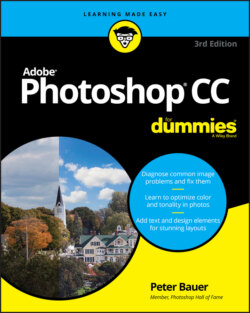Читать книгу Adobe Photoshop CC For Dummies - Peter Bauer - Страница 54
Preferences ⇒ Performance
ОглавлениеThe Performance panel contains options related to how Photoshop runs on your computer:
Memory Usage: Try bumping the memory allocation to 100%. If things seem slower rather than faster, back off the memory allocation to perhaps 85%. In a 64-bit environment, Photoshop can take advantage of all the RAM you can cram (into the computer).
History States: This field determines how many entries (up to 1,000) appear in the History panel. Storing more history states provides more flexibility, but at a cost: Storing too many history states uses up all your available memory and slows Photoshop to a crawl. Generally speaking, 20 or 30 is a good number. If, however, you do a lot of operations that use what I call “little clicks,” such as painting or dodging/burning with short strokes, that History panel fills quickly. For such operations, a setting of perhaps 50 or even 60 is more appropriate.
Cache Levels: The image cache stores low-resolution copies of your image to speed onscreen display at various zoom levels. Although this process speeds up screen redraw, the price is accuracy. Unless your video card has trouble driving your monitor at your selected resolution and color depth, you might be better served by Cache Levels: 1. That gives the most accurate picture of your work. (But remember to make critical decisions at 100% zoom, where one image pixel equals one screen pixel.)
Graphics Processor Settings: This area displays information about your computer’s video card. If your system has the capability, you’ll see a check box for Use Graphics Processor. Using this processor provides smoother, more accurate views at all zoom levels and other enhancements, including the capability to rotate the image onscreen — not rotate the canvas, but rotate just the onscreen image. And that’s too cool for words when painting a complex layer mask!
